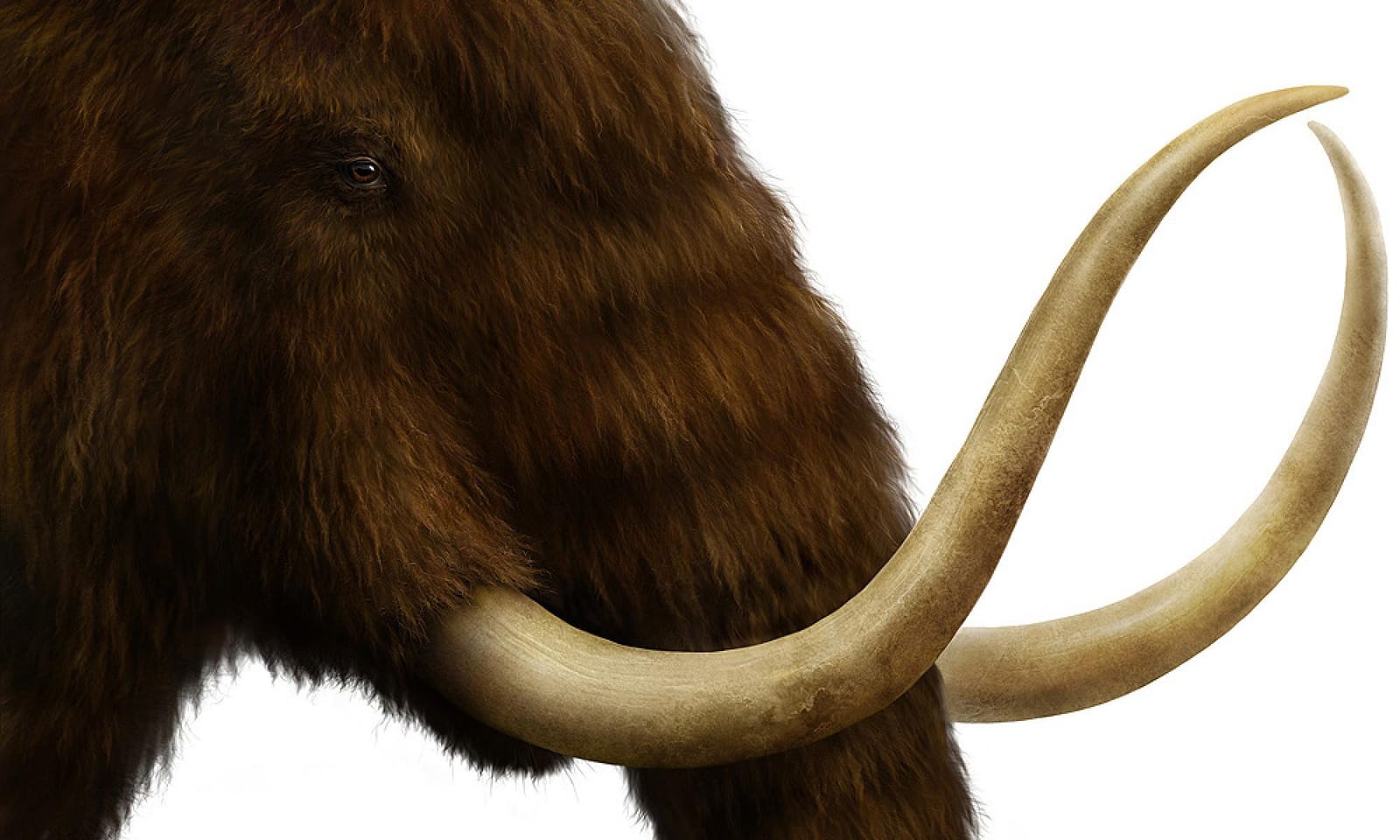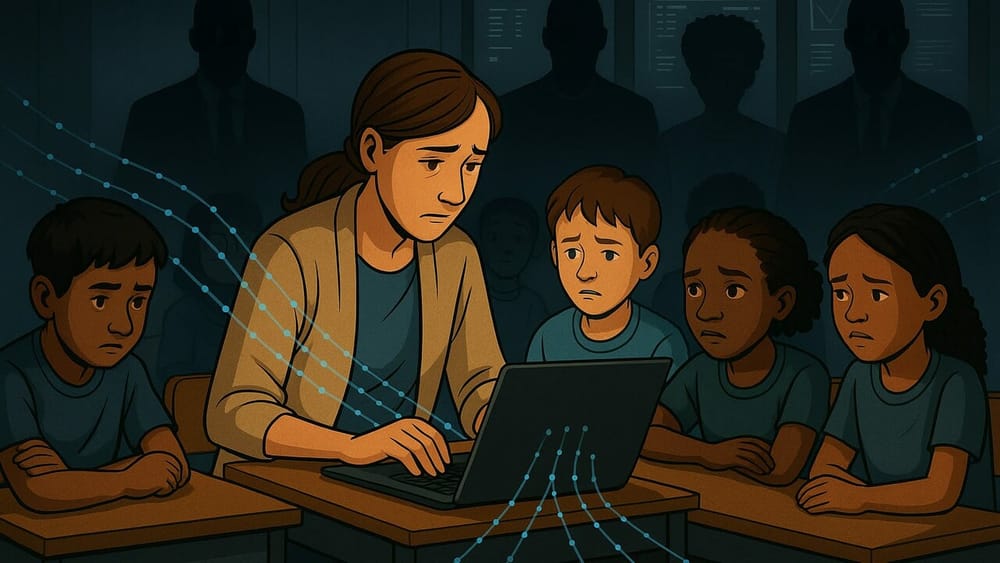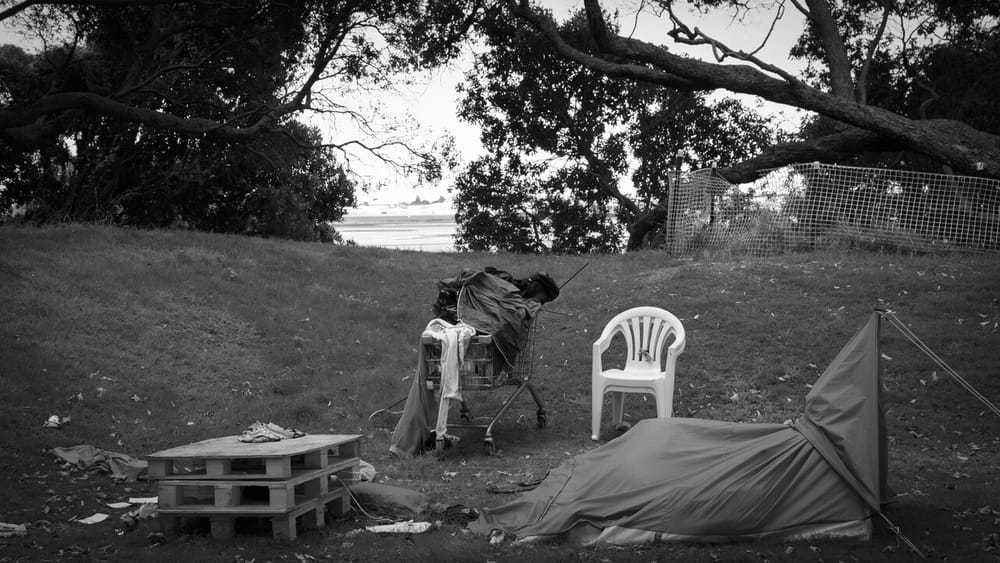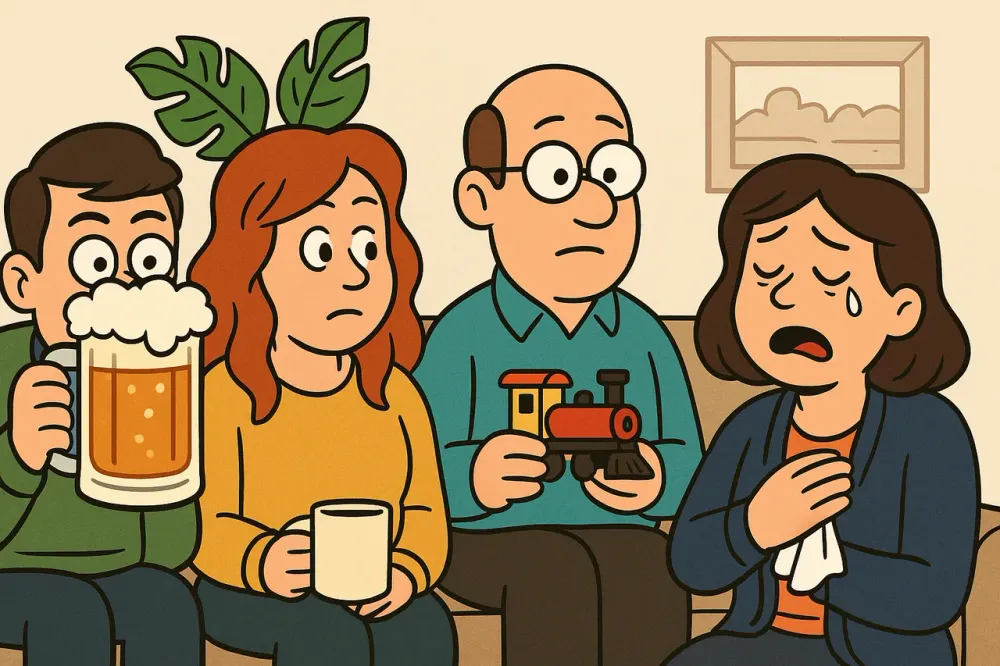Conservation is currently buzzing with the idea of de-extinction—a process that has the potential to bring long-dead species back to life. We have the chance to play God, but should we? What are the implications of bringing back something that has already been lost to time? What would these creatures look like? Will there be dinosaurs?
In our interview series De-extinction Dilemma, we tackle some of these difficult questions.
Phil Seddon is a professor of zoology at Aotearoa New Zealand’s University of Otago, who teaches principally in the postgraduate Wildlife Management Programme. He describes himself as a conservation biologist who specialises in reintroduction biology—the science around reestablishing populations of critically endangered species—and was chair of the De-extinction Task Force, a group charged with drafting an internationally recognised set of 'Guiding Principles on Creating Proxies of Extinct Species for Conservation Benefit.'
So today we are speaking about a process called ‘de-extinction.’ Could you begin by talking about what de-extinction is and the work you have undertaken within the field?
Sure. So I first became aware of something called ‘de-extinction’ with the National Geographic article back in about 2013. I remember thinking gosh, you know, how did I miss this, this looks like something I should know about. So I started to read more about it. People were saying, "Well, you know, we don't just want to have things in zoos, we need to have them back out in the wild doing interesting things." And it occurred to me that that's really what I'm involved with. At some stage in the de-extinction process, you want to be reintroducing or introducing whatever you've created back into the wild and that's my area of interest.
I became involved principally because I was looking at the kind of species that people were talking about resurrecting and thinking that before you go too far down the track of spending a lot of time and money on any of these species, you really need to know whether any of them are going to be decent candidates for de-extinction. We've got these international guidelines for reintroduction—things that you need to think about in order to plan and implement a reintroduction. So with some colleagues we took those guidelines and created a paper which set out a series of ten questions that you'd want to ask and answer about any potential de-extinction candidate before you even started. In the paper, we applied it to three species that were on de-extinction candidate lists: the thylacine (Tasmanian wolf), the Yangtze River dolphin and the Xerces blue butterfly. If your answer to any of those questions was a "no" or "we don't know" then you hold off and don't expend your resources on that.
I'm definitely going to delve into that now. Okay, from what I understand, we are yet to successfully ‘de-extinct’ a species; however, you refer to an example of the successful cloning of an extinct animal, the Pyrenean ibex, in your introductory piece ‘The Ecology of De-extinction.’ What is the difference, if there is one, between a successful cloning and de-extinction?
So cloning is reasonably mainstream, especially for mammals. It's used a lot in agriculture, where you're dealing with something like a sheep, taking a cell from one animal, creating an embryo from that and implanting it in another animal. So effectively you create an identical copy of the animal as much as you can.
De-extinction through cloning is not the only pathway but would be where you do something called interspecies cloning. So you need a different surrogate because you're dealing with an animal that's gone extinct. So in the case of the last Pyrenean ibex, her name was Celia, she died in 2000. The year before that, some people had taken some cells from her ear and carefully stored them on ice. So it meant that eight years later, eight years after the last Pyrenean ibex had died—I think a tree fell on her or something terribly unfortunate—scientists took those cells, just those body cells, and from that created an embryo that had exactly the same kind of genetic material as Celia, which they then implanted in the common goat. While the goat is a different species, it is close enough that they could bring it to term and a young ibex was born eight years after the last one of that species had gone extinct.
So that's the difference, it's interspecies cloning using cells from a species that has gone extinct; they don't exist anymore so you have to have some surrogate mother in the case of animals.
Poor Celia. Right, so you said that cloning is just one way of pursuing de-extinction. What are the other ways?
There are three general pathways. The first one is a bit of a cheat. It's called 'back-breeding,' and it's really where you say, "The species that we want to bring back exists in very close relatives and if we selectively breed those close relatives, they could look more and more like the species that went extinct." So it's just what we call a phenotype: the physical appearance.
There are a couple of examples of that. One is the quagga which was a version of the zebra—a Western Plains zebra—and it looked more like a horse actually, it hardly had any stripes on it, just some stripes on its back. It went extinct in the late nineteenth century. However, in the '80s people began to selectively breed the zebras that we're familiar with, making them bear a pretty close resemblance to this extinct species. Really, they're just strange-looking zebras. Genetically they would still be a zebra, so it's just the phenotype changing.
Another example of back breeding is the auroch, which is the ancestral version of all the cattle we have today which used to roam around Palearctic Western Europe. So people are taking certain breeds of cattle and using genetics to guide this to try to recreate something that looks a bit like that lost version. They're getting convincingly close to how it looks and given that these are descendants of them, they may even get genetically closer. But still, it's just what it looks like. So, that's one pathway: back-breeding.
The second is cloning; the Pyrenean ibex example. So if you have a cell and you've stored it on ice then you can resurrect that cell and use it to create a clone if you have a suitable surrogate and enough resources. You get pretty close with that too, but not identically, because part of our genetic inheritance always comes from the mother. So whatever the surrogate is, that surrogate will introduce some of their genetic material. At some level, there's a subtle difference. Plus there are differences by being in a different species, we call it a kind of epigenetic environment. So some genes are turned on and off depending on what they're in. You get close, but not identical.
The third pathway is genetic engineering. If you go back in time, no one was collecting frozen cells of things like the woolly mammoth, and no intact frozen cells exist. So, you have to try and reconstruct as much of the genome of the extinct species from the samples around, but there will be gaps. People talk about DNA as a very fragile molecule; similar to when you leave a book out in the rain and it starts to fall apart. Sometimes you've only got a word on a page or a few letters—there are gaps all the way through it. So the genome will look like that, full of gaps. But you can look at a near relative and you could say, "Well this sequence in this living version resembles the sequence in this extinct near relative and the missing bit probably looked a bit like that." So then you could recreate that missing bit and start to fill in some of these gaps. You re-engineer or modify the living relative with what you think is the best examples of the genetic material. In this instance, you're creating a hybrid and really getting further and further away from what that original thing was.
So, three pathways: back-breeding, cloning and genetic engineering.
The book in the rain was a wonderful analogy. Thank you. Right, so where are we at with the technology needed to make de-extinction a reality? Are there various new innovative technologies being used? We're looking at CRISPR in this biotechnology series, does that apply here?
Yes, absolutely. So when you're doing the genetic engineering, CRISPR is this powerful tool for very selectively inserting genetic sequences into any genome that you want. And it's getting better and better, more powerful and more precise. So that has changed the game for the genetic engineering pathway.
Cloning technology is getting better all the time. While it's possible for some species, it's really difficult for birds, for example, as they have eggs. With mammals, it’s touch and go. The technology is improving though, and we are getting better at creating proxies of extinct species— that's what we call them—rather than a resurrected species. We made this specific decision to talk about proxies rather than bringing back the extinct species, as it's very misleading. People think, "Oh okay, we're going to get exactly what we lost.” At this stage, there’s no way to do that.
So the IUCN has another set of guidelines that I was involved with, which are really guidelines for the creation of these proxies for conservation purposes.
That does makes sense. So what would be the challenges of advancing this technology from your perspective and what are its limitations?
To do cloning, you need cryopreserved cells. So you can't go back more than 20 or 30 or 40 years. So, yes dinosaurs are off the table as we don’t have dinosaur DNA. We can't clone mammoths directly, because even though they were preserved in Siberian permafrost, much of the DNA is destroyed and the cells have broken down. You've got to cryopreserve cells in a very careful way. So we can't go very far back for that.
So, if we take back-breeding off because it doesn't really count, we're left with genetic engineering. And then the limitations are that even with CRISPR, the differences between one species and another might be tens of thousands of genetic sequences. With CRISPR, you're changing one or two or three sequences at a time. You might think you're getting it right, but it doesn't always work. Even if we knew exactly what we were doing, this is a very long and drawn-out process—we're not at that stage yet.
Right, so I assume this probably falls under the guidelines that you've spoken of, but one of the points raised in your article and attributed to Dr Beth Shapiro, an evolutionary molecular biologist and leading expert in the field of de-extinction, is that the purpose of de-extinction is to “restore lost ecological functions.” Do you believe this is the case? I suppose I am left wondering if we are doing this for the good of the planet or just for human entertainment?
It's always inspiring at some level until you dig down to the detail. I've spoken to ecologists who have said that they think this is a terrible idea but they'd pay a large sum of money to see a resurrected woolly mammoth. So I think we don't lose our kind of awe of these kinds of animals.
The rationale for doing it—the defensible rationale for doing it—is to restore lost ecological function. All species do something in the ecosystem, some do things more than others, so when you lose a species you create a gap and the gap isn't always necessarily filled. Sometimes, the ecosystem changes and you've lost that function. So by bringing a species back and saying we need it to restore what it was doing—the way it browsed, the way it grazed, the way it trampled, the way it dispersed seeds, things like that—that's part of ecosystem restoration. We do this already with living species; we call it an ecological replacement. So if a species has gone entirely extinct, but it did something useful, we can find a near relative or something else that did the same thing and introduce that.
People have done it with giant tortoises on islands in the Galapagos. So an island used to have a species of giant tortoise that went extinct. Giant tortoises trample and graze the ground and they create something called tortoise turf, which is closely cropped grass; it's really good for the native species and it discourages weedy species. You lose the tortoises, then that ecosystem starts to change as the weeds invade. But you could get a different species of giant tortoise to come in that would trample and graze in the same way and you could bring it back. But, if you've lost every giant tortoise there is in the world, you could argue that if we could bring something back that looked like a giant tortoise, we could use it as an ecological replacement.
So that's the defensible strategy for it. And that's what people are using to justify this. But you've really got two questions you want to ask. First is, is that ecosystem function really necessary and is this something we have to restore? And the second is, could we find something living currently that would be a good replacement without going to all this effort of recreating something that we've lost?
Inevitably, somewhere down the line, someone is going to create something that will be a zoo attraction and not much more, but I don't think that's a defensible way of thinking about it.
That's good to know. So, building on your guidelines again, how would we determine the species we de-extinct to avoid tipping any ecological balances? Would we only be seeking to bring back those whose ecological niches have yet to be replaced?
Yeah, so what we did is, we set out a series of questions... It came down to: Do we know why the thing went extinct? Can we address the cause of extinction? Can we address current and future causes of extinction? Is it even feasible? There’s no point putting something out there if it's just going to disappear again. Do we know enough about the biology, the ecology of the thing that went extinct? Is there somewhere to put it? Is the release habitat still available? If it's not, don't even start. Is it socially acceptable? So are stakeholders, community, people in those areas actually going to want this thing back, or some version of it? Is there some legislation that's going to cover this? Is it even legislatively possible? And then what you're talking about—ecologically what are the risks? Is this thing going to suddenly become a weird invasive species because we've created a hybrid? We don't know what its ecology is, it might act in strange ways we can't anticipate, it might impact species that are already there, it might go extinct again pretty quickly and then that's been a waste. Do we have an exit strategy? Can we reverse this thing once we let them go, could we bring it back in if things are going badly? So you've got to answer all those questions. The ecological risk is definitely a big one.
There are some really big ethical issues within that. So given the current conditions on Earth i.e. the climate crisis, do you believe that we have the natural infrastructure that some of these species would need to thrive? And how would we tackle re-extinction?
That's a really good question because even for reintroducing existing species, we've got to be careful about just thinking we can put them back where they used to be.
[Aotearoa] New Zealand does a lot of species reintroduction stuff. Say, for example, if you had stitchbird or hihi [indigenous name] which are up in the North Island, and you went, "Oh okay they used to be in this area so we should put them back in there." But, the climate's changing. People have done some modelling and said, "Actually, some of the appropriate habitats could be way out of the range that we've ever recorded for this species." Therefore, it becomes a case of not reintroducing them at all but something called assisted colonisation, where you deliberately help a species establish themselves in new habitats. And that's just for existing species.
So when you go back to a species that was there 100 years ago, that habitat has changed. If you go back 10,000 years ago, it's massively changed. Those areas may be completely unsuitable for whatever you want to put back into them, if you think it has the same ecology. And then you're risking exactly what you said: re-extinction and all the bad news that goes with that.
So it is difficult to know, if you introduce them, whether they will fit within this new environment or if it is going to be too much for them?
If you go back too far, we don't know that much about the ecology of woolly mammoths. We've got to piece it together from archaeological and prehistoric stuff. If it's something that's gone extinct relatively recently, that would be easier because we would probably have studied it while it was still here and understand what its habitat needs are. In the case of the woolly mammoth, the expectation is you're going to put it back into a very modified habitat and it's actually going to change that habitat back into what it used to be, which would be good for climate change apparently.
‘Apparently,’ I like that. So while we are responsible for a great deal of extinctions (as I am sure you are well aware, we are in the midst of a mass extinction which is largely credited to humans), do you think we have the right to bring back the dead? Could you elaborate?
When we put together the guidelines on de-extinction, I included some environmental philosophers in the task force. It was fascinating—they spoke a completely different language. They addressed this idea about obligation: We made the species go extinct, do we have an obligation to bring it back? And in philosophy speak, if I can boil it down into something that would terrify them in its simplicity, their reasoning was we don't have an obligation because we weren't the entities that made them go extinct, even if we're the same species. So we don't have an obligation to a wronged entity and the wronged entity is no longer here so there's no one here that owes anything to anything that is still here. So that leaves us free to think much more widely. If we don't have that obligation, what do we have an obligation for?
A lot of conservationists are still mired in this idea of preservation, desperately trying to keep things as we think they should be, as they were once. Ecosystems change naturally, and extinction is actually natural. Things are changing all the time. It doesn't make sense in restoration or reintroduction to try just to freeze an ecosystem at some arbitrary point in space and time. But we try to do it all the time. What it means is we need to acknowledge change, we need to acknowledge novelty. Things are different. We have a whole range of species here that weren't here one thousand years ago and there's no way we could go back one thousand years. We couldn't even go back 150 years really.
So I think the conversation that we had, socially and publicly, is saying, "What do we want the natural world around us to look like?" Because we are rapidly developing the ability to completely change that. Well, we change it by default anyway; we've changed it, we've screwed it up without having to think about it too much. But if we want to restore things, we need to get away from the idea that we're preserving and restoring it back to how it used to be and instead think about what's a future state that would be stable, resilient and support a wide biodiversity of unique living things. What would be a world we'd want to live in?
This ties in perfectly with my final question. What do you think is the future of conservation and what role will de-extinction/ biotechnology play within that?
We're seeing a massive increase in our ability to read and write genetic material, so I think one of the future pathways will be around the huge expansion of genomic and genetic tools that we can use for genetic rescue. So looking at supporting existing populations and preventing extinctions, rather than focusing on bringing things back. We're not taking care of the world that we have at the moment, let alone reaching back into the distant past to bring things back.
So I think we'll still have all the usual conservation tools, but what we have to do is embrace some of these new technologies. Not an easy task. On one hand, [we have] this public suspicion about things that have been genetically modified—we have lots of that in New Zealand. On the other hand, conservationists are really conservative, who knew? And they don't like this idea of mucking around with things—they've still got that preservationist mindset. They are concerned that if you start to modify the genetic material of a species, you're messing around with it, you're playing god, you're changing natural things. But, we're doing that anyway, it's just we are yet to actually take a hand in it and take a direction in it.
We could really start applying these things to prevent extinctions. You may have heard of the Northern White Rhino, we lost the last male three years ago. I think the two females, mother and daughter, neither of which can breed are still alive. But we have cryopreserved cells at San Diego's Frozen Zoo. So they're using de-extinction technology to create a clone of a Northern White Rhino to put into a surrogate Southern White Rhino. So, we're bringing it back beyond the brink of being functionally extinct.
Or, as a number of our species are breeding through these kinds of genetic bottlenecks, you could imagine using that genetic engineering approach to reengineer some lost diversity into the species alive today, like [Aotearoa New Zealand’s] kākāpō.
So I think the future is great. I think it's going to raise a whole lot of questions, a whole lot of debate, but it's exciting times. I think the next five to ten years are going to be transformative.







